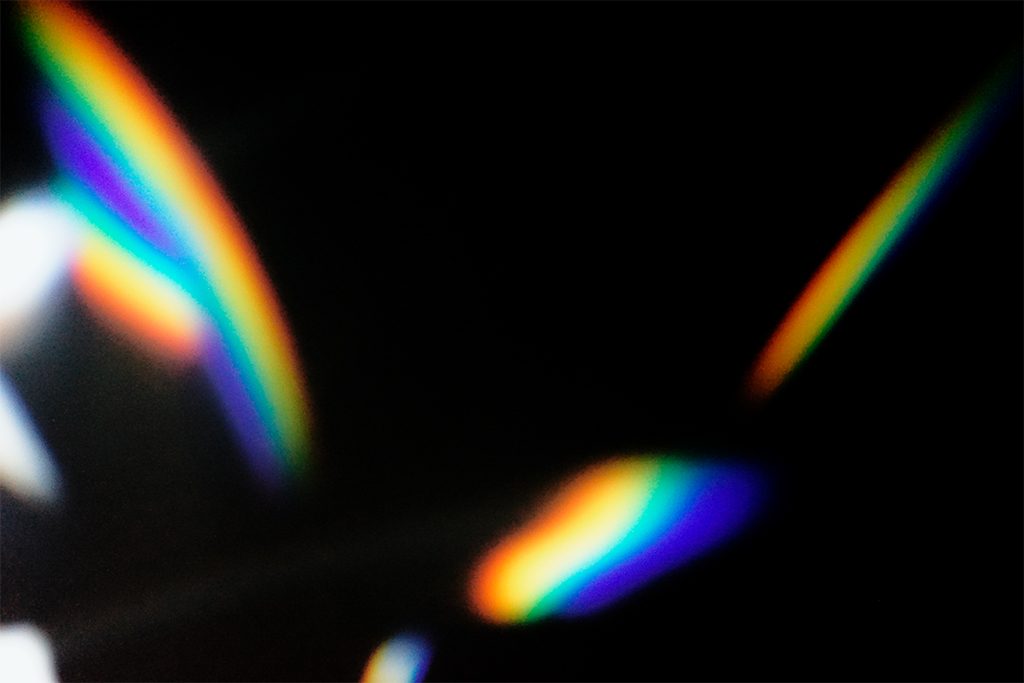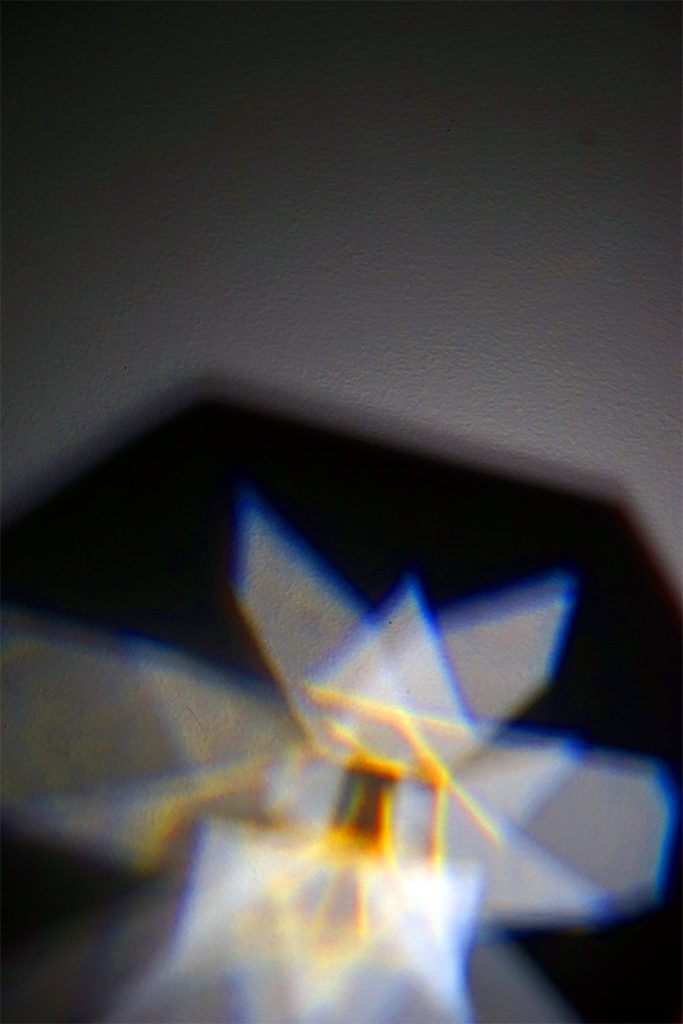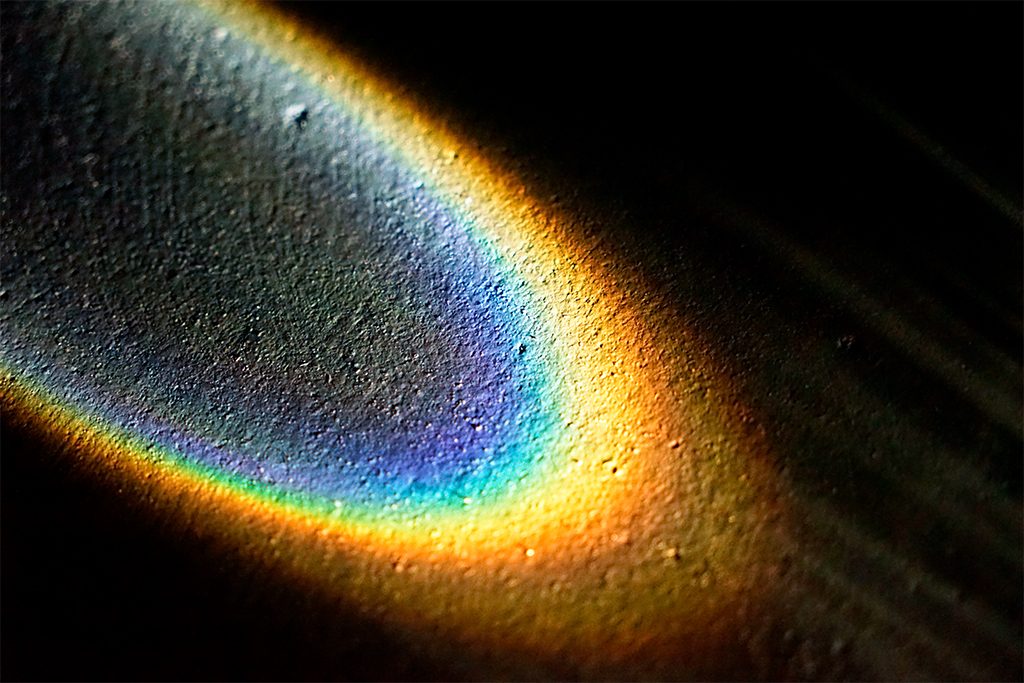While the word white conjures an absence of colour, if possible, Flat White somehow manages to diminish that conjuring further. For my third experiment, I decided to turn the absence of colour notion completely upside down by taking a flat white light beam in a dark room and refracting it through various media to disperse the light. In this way, flat white light is split into its constituent colours and the audience is seeing Flat White completely broken down into what it actually is – a spectrum of colour. I found this experiment to be my most exciting as it totally defies conventional expectations of Flat White representation.
I gathered a number of glass and crystal items which included Pyrex bowls, glass tumblers, vases and hanging crystals. All vessels were filled with water, which assisted in the light dispersion process. I also gathered two torches as I intended to experiment with both singular and multiple light sources. I read that I should darken the room and then attempted to create both full spectrums and partial dispersion of the light, where only some colours were represented. The Pyrex bowl and the hanging crystal produced the clearest results. For some reason the cut crystal tumblers and vases created beautiful reflections of light but didn’t disperse the light quite as well.
Creating the spectrums turned out to be quite a time-consuming process as there were limitless angles, heights and degrees of proximity to my crystal and glass in which I could hold my light source. I manoeuvred my light source to produce the most aesthetically pleasing and interesting dispersions that I could create before documenting them. The documentation stage too, involved experimentation in terms of my choices to photograph the spectrum from various distances and heights. I decided to raise and lower my various media using a plinth, low table and the floor to see if they would yield different results – which they did. I also played around with the surfaces upon which I was creating the spectrums. These surfaces varied in texture from curtain textile to concrete surfaces. The concrete surfaces worked best but even here there was another variable – the concrete floor had a rougher finish than the concrete wall. Both smooth and rough surfaces produced results that I found intriguing, each adding to the final result in different ways.
I then added in an additional light source so that the light was being dispersed through either one or two vessels simultaneously but in two directions. I was only able to achieve a minimal dispersion of the light this way.
The editing process was not arduous as I was happy with the diversity of my results. I also experimented by superimposing some of the images on others.
I’ve chosen to present the photos which I believe best reflect the diversity of my results. They are all counter-intuitively titled ‘Flat White (1 – 8)’. In some cases, the spectrum is shown in its entirety, in others there is only partial dispersion of light and here particularly, the results appear other-worldly and cosmic, hopefully intriguing the audience and inviting closer inspection.







